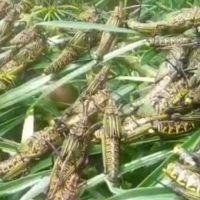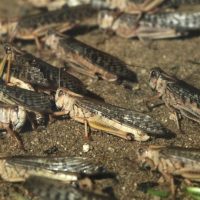The Food and Agriculture Organisation leads Burundian farmers into adopting farming techniques that help them to cope with climate change.
“Climate has significantly changed over the past years and this negatively affects farming”, says Vénérand Nyandwi, 62, a farmer and father of 10.
“Normally we sow our fields of beans at the latest on 15 October. But this year, it hasn’t been the case because the dry season has been abnormally long. I had never seen anything like this”, says Marthe Barumbanze, a farmer of about 80. Such are cries of farmers living in rural Bujumbura hills faced with damaging effects of climate change on agriculture.
In the same way, a 2016A Integrated Food Security Phase Classification (IPC) report has highlighted the damaging effect climate change has on agriculture in Burundi. “Family farming, the main source of food and means of existence of about 90% of the Burundi population is now jeopardized by recurring natural disasters”, reads the report.
Agriculture is the means of livelihood of the overwhelming majority of Burundians. The sector is increasingly threatened by poor farming practices and climate hazards. As far as the latter is concerned, its frequent manifestation with immediate impact is“the rain season that starts too late and ends too early. Besides, extreme climate events such as droughts, floods, hailstorms are the other devastating and more frequent manifestations”, says Salvator Ndabirorere, an FAO expert in natural resources management.
Faced with such a reality, FAO has engaged in helping Burundian farmers to adapt their farming practices to climate change and limit its adverse effects. The involvement of the organisation in the adaptation of Burundi agriculture to climate change is overarching.
FAO builds the capacities of farmers to raise their awareness of climate change, its causes, its effects, and ways to adapt to it.According to Ndabirorere, communities of farmers are trained to adopt responsible practices given that the emission of greenhouse gases in Burundi is mainly due to farming activities such as stagnant water in rice fields, farming wastes, and the like.
“Farmers are trained and guided to adopt integrated farming practices that help increase the production, resist to climate vagaries and contribute to the preservation of the soil”, says the FAO expert.
To this end, farmers are encouraged to grow improved seeds (such as beans and maize) that yield more crops and are of short cycle. They are urged to stock the surplus of crops to provide for the period of shortage instead of perpetuating their bad practices of selling any surplus they get.
Moreover, FAO promotes water management by helping communities of farmers build water dams for irrigation. This allows year-round farming. Likewise, farmers are encouraged to grow crops in wetlands to allow more production over little spaces.
The promotion of resilient animal breeding and aquaculture is also a priority in addressing climate change and food security issues.
Ndabirorere also says that FAO trainers show farmers how to manage and recover farming wastes. This has a two-fold advantage: the limitation of the effect of those wastes on climate change and the use of those wastes for soil fertilization.
However, not all Burundian farmers benefit from the assistance provided by FAO. Farmers met in rural Bujumbura, for example, say that none has ever shown them how to deal with climate hazards. “We don’t know how to deal with this growing climate threat on our farming. None has ever shown us how to cope with it”, says Nyandwi.


















 IWACU Open Data
IWACU Open Data

